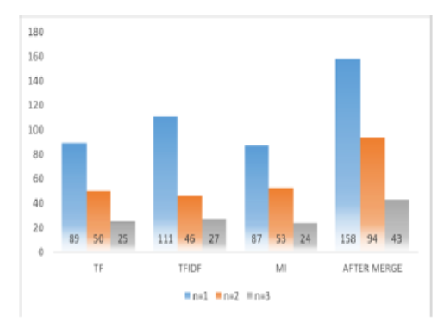


Indian Journal of Science and Technology
DOI: 10.17485/IJST/v17i24.1597
Year: 2024, Volume: 17, Issue: 24, Pages: 2519-2528
Original Article
Mohamad Amin Osman1, Shahrul Azman Mohd Noah1∗, Saidah Saad1
1Center for Artificial Intelligence Technology, Faculty of Information Science & Technology, Universiti Kebangsaan Malaysia, Malaysia
*Corresponding Author
Email: [email protected]
Received Date:27 June 2023, Accepted Date:01 April 2024, Published Date:13 June 2024
Objectives: To identify ontology concepts from text documents for the construction of work process ontology. Methods: This study proposes a methodology to identify terms representing a work process ontology concept from a document. The methodology encompasses several key steps: document collecting, text pre-processing, term weighting and analysis, terms mapping, and domain expert relevance judgments. A comparison between the results of three different term weighting schemes, namely the Term Frequency (TF), Term Frequency-Inverse Document Frequency (TFIDF), and Mutual Information (MI) is made with the ontology concept that the domain expert has judged. Findings: The approaches adopted in this study have managed to extract ontological concepts from the targeted domain knowledge source. The findings of the comparison analysis suggest that the TFIDF term weighting scheme exhibits better results compared to the TF and MI weighting schemes. Novelty: A work process ontology is a structured knowledge describing daily operations in the government sector. However, there has been little to no effort in building the work process ontology. This study presents an integrated approach for identifying ontology concepts from documents within the domain of the work process. To the utmost extent of our understanding, this research initiative is the initial attempt to introduce a structured methodology for the semi-automatic extraction and evaluation of concepts and relationships within this domain. The findings can be utilised as a foundation for developing an ontology in the specific field.
Keywords: Ontology, Work process, Text extraction, Natural language processing, Term weighting
© 2024 Osman et al. This is an open-access article distributed under the terms of the Creative Commons Attribution License, which permits unrestricted use, distribution, and reproduction in any medium, provided the original author and source are credited. Published By Indian Society for Education and Environment (iSee)
Subscribe now for latest articles and news.